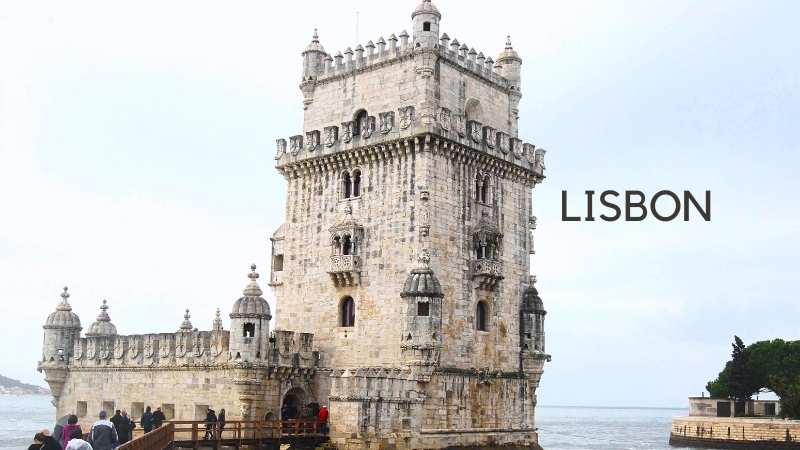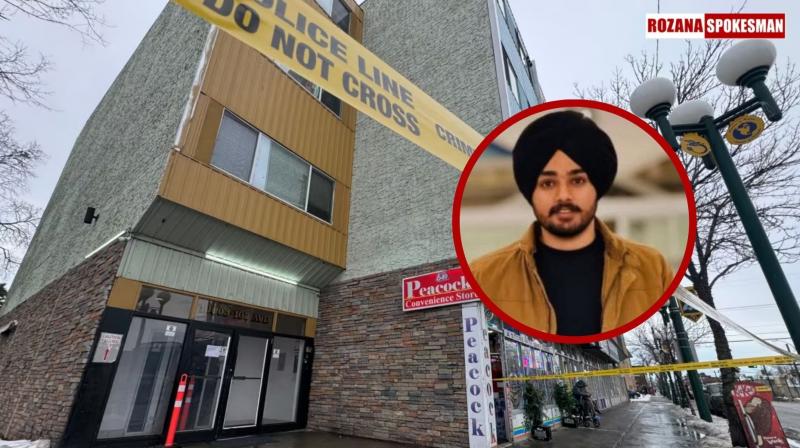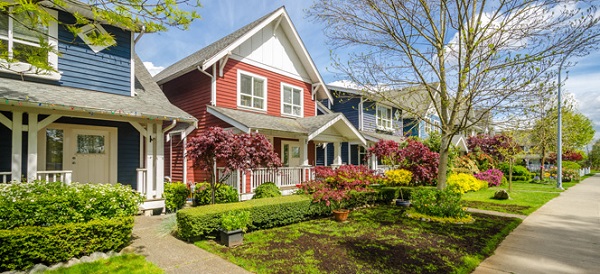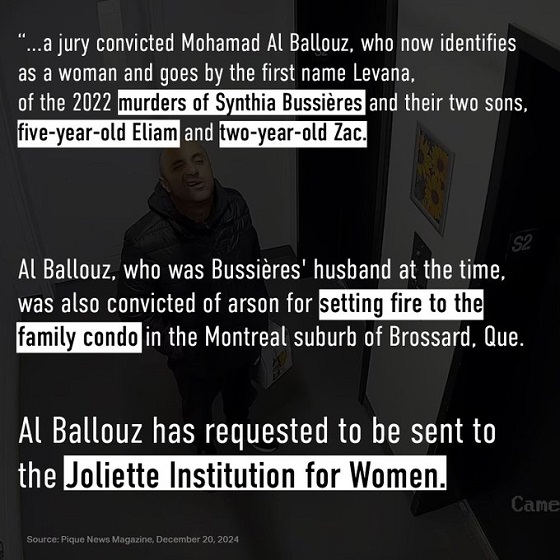Edmonton
My European Favourites – Lisbon’s Belem District


The Belem district of Lisbon is where you will find the most famous buildings and monuments from what is called the Age of Exploration or Age of Discovery as well as numerous parks and museums. It is located along the coast at the mouth of the Tagus river about 4 kilometers west of Lisbon’s city center. Belem, which is Bethlehem in Portuguese, used to be a small fishing village before it became the shipyard and docks at the center of the discoveries. It remained a separate town until recently when it became a parish district of the city of Lisbon. To better understand the Belem district and its monuments requires a brief history of the Age of Discovery, Prince Henry the Navigator and the Order of Christ.
In the 15th and 16th centuries, Portuguese sailors were at the forefront of the Age of Discovery. They recorded information about places they visited, and they mapped the coasts of Africa, Asia, Brazil and even Newfoundland. The expeditions were started in 1419 along the west coast of Africa under the sponsorship of Prince Henry the Navigator, who at the time, was Grand Master of the Order of Christ.

Historical figures from the Age of Discovery on the Monument of the Discoveries
The Order of Christ’s origins in Portugal lie with the Knights Templar that were founded around 1119. The Templars were best known as Christian warriors, but the majority of their membership were not combatants; they managed the economies in Europe and formed an early form of banking and finance. The Templars, who had become wealthy and powerful, were abolished on the 22nd of March 1312 by Pope Clement V under pressure from the French King Philip IV. The French king had many debts with the Templars, so he was motivated by an opportunity to erase those debts and remove the Templar threat to his power and influence.
The Templars were pursued, persecuted and annihilated throughout Europe with the help of political influence from the Pope as head of the Catholic Church. Portugal’s King Denis refused to go after the Templars and in 1319, he negotiated with Clement’s successor, Pope John XXII, to establish the Order of Christ, which were granted the right to inherit the assets and property of the Templars. So, with the support of the order’s Grand Master, Prince Henry, the emblematic cross of the Order of Christ was emblazoned on Portuguese sails during the discoveries.
The cross is seen on various emblems today including on the logo of the Portuguese national soccer team and on that of the Brazilian national soccer team. If you are interested in the Knights Templar and Order of Christ, there are various sites of interest throughout Portugal.

Compass Rose with a World Map of Portuguese explorations
To conduct the exploration of northern Africa, the Portuguese needed a vessel that could be easily maneuvered, so they developed a small boat called a caravel. The caravel had lateen sails, so it could reach good speed on the open water with the wind at its back, but just as important, it could also be sailed into the wind. Using the caravel, the Portuguese worked their way along the African coast and set up trade posts.
Eventually, in 1488, Bartolomeu Dias reached the Cape of Good Hope and rounded the southern tip of Africa and into the Pacific Ocean. Probably the most famous Portuguese discoverer, Vasco da Gama, followed the same path and reached India in 1498 setting up the spice trading route. By cutting out the “middle men,” which at that time were Arab, Turkish and Italian merchants, the Portuguese Crown became very wealthy.
In 1500, Pedro Alvares Cabral set sail for India but sailed far west into the Atlantic to take advantage of the trade winds. He spotted the northeastern part of South America which would become a Portuguese colony and the only Portuguese speaking country in the Americas, Brazil.
The Portuguese continued setting up trade routes to other parts of Asia, including Japan in 1542. The immense wealth from the discoveries and subsequent trade laid the foundation for the Portuguese Empire.

Manueline style architecture, a caravel and the Order of Christ cross on the Portuguese national soccer team logo
With wealth, came great building projects. Portugal has a unique architectural style called Manueline or sometimes referred to as Portuguese late Gothic. The Manueline style originated during the 16th century and depicts maritime elements paying tribute to the discoveries made at that time and financed by the resulting lucrative spice trade. Some of the most prominent features of the Manueline style include armillary spheres, sea shells, the cross of the Order of Christ, rope columns and botanical motifs like laurel branches, oak leaves and acorns. Many Manueline buildings were destroyed in the great earthquake in 1755, but the Tower of Belem and Hieronymites Monastery, which are UNESCO World Heritage Sites, are two of the best examples we can see today.

Belem Tower wall, view of the Tower from the Discoveries Monument and the Santa Cruz sea biplane
The Belem Tower, officially named the Tower of St. Vincent, is a four story 16th century fortification that guarded the entrance into Lisbon. It was the last and first thing explorers saw as they left and returned from their voyages. When it was first built in 1520, the tower stood on an island in the middle of the Tagus river, about 200 meters from the northern shore. The tower has been rebuilt various times and its current style combines Manueline, Gothic, Moorish and Renaissance features. It has also been used as a prison and is one of the most recognizable and photographed landmarks of Lisbon and Portugal. For a fee, you can enter the tower.
At the corner of the Belem Tower Park, you will see the Santa Cruz biplane monument dedicated to Gago Coutinho and Sacadura Cabral who were the first pilots to cross the South Atlantic ocean in 1922. The seaplane was followed by a support ship as they didn’t have the fuel capacity to make the entire voyage. It was a perilous 79 day journey from Lisbon to Rio de Janeiro, and the plane was ditched along the Brazil coast after an engine failure in bad weather. It’s quite the story. You can see a replica of the actual plane in the Maritime Museum. From the monument walk around the Bom Sucessso docks and along a nice waterfront walkway. You will pass the Old Belem Lighthouse on the way to our next stop, the Monument of the Discoveries.

Monument of the Discoveries, Compase Rose and Prince Henry the Navigator
The 52 meter Monument of the Discoveries (Padrão dos Descobrimentos), completed in 1960, celebrates the Age of Discovery and is designed to look like a caravel. The monument commemorates the 500th anniversary of the death of Prince Henry the Navigator, depicted at the front of the monument holding a caravel. The monument has sixteen statues on each side of Prince Henry depicting notable people from that era including monarchs, explorers, cartographers, artists, poets, scientists, and missionaries. The square in front of the monument, donated by South Africa, has a compass rose and a world map detailing the Portuguese explorations. Inside, there are exhibition halls and an auditorium plus a lift to the top of the monument that offers great views of the Tagus river, the 25th of April Bridge, the statue of Cristo Rei on the other side of the river, the world map on the square below and the Hieronymites Monastery.

Hieronymites Monastery from the Monument of the Discoveries
The Hieronymites Monastery (Mosteiro dos Jeronimos), started by King Manuel I in 1501, and took 100 years to complete, is the former monastery of the Order of Saint Jerome. The monks’ role was to provide spiritual guidance to the sailors and to pray for the king’s soul. In front of the monastery, there is a nice park with hedges and a fountain decorated with the coats of arms.
The Santa Maria de Belem church and the monastery cloisters are great examples of Manueline architecture. The entrance to the church is free while there is a charge to see the monastery cloisters. Once you enter the cloisters, you can enter the vault of the Santa Maria church for a great view of the columns and nave. Some kings and great figures in Portuguese history are buried here including Vasco da Gama, whose tomb you can see at the entrance, along with the poet Luis de Camões, who wrote the epic, “The Lusiads,” detailing the exploits of Gama and his compatriots.

Hieronymites Moanstery fountain, Santa Maria de Belem church interior and the tomb of Vasco da Gama
In the western wing of the Hieronymites Monastery, you will find two museums. The Maritime Museum (Museu da Marinha) is administered by the Navy and offers more details about the explorations and all other aspects of the Portuguese history of navigation. You can see scale models of ships, maps, paintings, navigation instruments, royal barges and sea planes.
The Museu Nacional de Arqueologia (National Museum of Archaeology), founded in 1893, contains ancient art and artifacts from throughout the Iberian Peninsula. In the Belem Cultural Centre, located near the monastery, there is the Coleção Berardo, which is a modern and contemporary art gallery.

The Pastéis de Belém busy counter, a peek at the production and the beautiful tarts
After a busy morning, you might need a snack. The Pastel de Nata is a Portuguese custard tart with a flaky crust that is dusted with cinnamon. It was invented by Catholic monks in Belem at the Hieronymites Monastery before the 18th century. Why the monks, you ask? Convents and monasteries used egg whites in those days to starch clothes, so the leftover yokes were used to make cakes and pastries. Today, the nearby Pastéis de Belém café is a must stop while you are in Belem to taste the authentically made pastry. There are sometimes long line ups outside, but they are customers waiting to buy “to go” sleeves of the treat.
There are many seats inside, in various rooms, where you can sit and order your tarts and coffee. As you go deeper inside, there are windows where you can see the custard tart operation at work. Every few minutes you will see a staff member emerge from the bakery carrying multiple trays of the tarts to restock the front counter as they constantly fly off the shelf. Every self-respecting Portuguese bakery in the world makes their version, but the monks’ original recipe is a closely guarded secret and is held by just a few people. They have all memorized the recipe as there can be no written version.
Just further down the street, you will see the Pink Palace, which is the official residence of the Portuguese President. Next to the palace is the 18th century Royal Riding School, which used to house the Museu Nacional dos Coches (National Coaches Museum). The Royal Riding School can still be visited and will have some coaches on display. The museum’s new location, which is only a few meters away, has a much larger space to show off one of the world’s finest collections of horse drawn carriages the from 16th to the 19th century.
The 5 hectare Jardim Botânico Tropical (Tropical Botanical Garden), which was laid out in 1912 by Hieronymites Monastery, is one of Lisbon’s best green spaces. The park has flora from all over the world, principally from Portugal’s former colonies. Some of the art and architecture with colonial themes date back to the 1940 Portuguese World Exhibition. The grounds have 18th century marble statues by Italian artists, an Arch of Macau, an Oriental garden, greenhouses, and the 17th century baroque Calheta Palace, which is now a library and is used for exhibitions. Visitors enjoy seeing the ducks, swans, geese and peacocks who are found throughout the garden and its ponds. It is a good place to take a break from a busy day in Belem.
In the evening, you may consider a short walk along the waterfront, maybe while enjoying a beautiful sunset, to the Doca de Santo Amaro (Dock of St. Amaro). The dock is located next to the foot of the 25th of April Bridge. Here, you will find a variety of restaurants to have a nice dinner. As you enjoy your wine, you can reflect on the courage of the great explorers who left these shores to explore the world.
Explore Europe With Us
Azorcan Global Sport, School and Sightseeing Tours have taken thousands to Europe on their custom group tours since 1994. Visit azorcan.net to see all our custom tour possibilities for your group of 26 or more. Individuals can join our “open” signature sport, sightseeing and sport fan tours including our popular Canada hockey fan tours to the World Juniors. At azorcan.net/media you can read our newsletters and listen to our podcasts.
Images compliments of Paul Almeida and Azorcan Tours.
Alberta
Edmonton Murder Shows Trudeau Has Lost Control Of Crime

Harshanedeep Singh from rozanaspokesman.com
News release from the Conservative Party of Canada
After nine years, the NDP-Liberal government has lost control of crime. Violent crime has skyrocketed by 50 percent since Trudeau became Prime Minister and 256 people were killed by a criminal who was out on bail or another form of release in 2022, the latest year available with full data.
On Saturday, Canadians witnessed the shocking, heinous murder of Harshandeep Singh, a 20-year-old security guard in Edmonton, Alberta. Singh was shot in the back while thanklessly doing his job as a nighttime security guard at a central Edmonton apartment building. A promising young life was snuffed out by a cold-blooded monster.
“One cannot imagine how Harshandeep’s family and friends feel,” said Tim Uppal, Deputy Leader of the Conservative Party of Canada. “Our thoughts and prayers go out to his family at this incredibly difficult time.”
Edmonton Police have since arrested two individuals and charged them with first degree murder: “Evan Rain, 30, and Judith Saulteaux, 30, were arrested and charged with 1st degree murder in relation to Singh’s death.”
Early indications suggest that Rain has a known prior violent history, with media reports aligning with Rain’s current age. In 2018, an “Evan Chase Francis Rain”, then age 24, was charged for a violent kidnapping in Wetaskiwin, one hour south of Edmonton. A woman was forced into the trunk of a car at gunpoint. It is not clear from media reports how this case was concluded.
In 2022, “Evan Rain, 28, of Paul First Nation” (45 minutes west of Edmonton) faced twenty-nine charges for a violent robbery in northern Saskatchewan involving firearms.
This is from the 2022 RCMP news release at the time:
Evan Rain, 28, of Paul First Nation, is charged with:
-one count, robbery, Section 344, Criminal Code;
-one count, have face masked with intent to commit an indictable offence, Section 351(2), Criminal Code;
-eight counts, possess a firearm knowing it was obtained by the commission of an offence, Section 96(2), Criminal Code;
-one count, possession of property obtained by the commission of an offence, Section 354(1)(a), Criminal Code;
-one count, mischief under $5,000, Section 430(4), Criminal Code;
-sixteen counts, possess a firearm while prohibited, Section 117-01(3), Criminal Code; and
-one count, point a firearm, Section 87(2), Criminal Code.
The status of these charges is not readily apparent. The RCMP’s 2022 news release does make clear that Rain was already prohibited from possessing firearms: “sixteen counts, possess a firearm while prohibited, Section 117-01(3).”
“It appears that our so-called ‘justice’ system terribly failed Harshandeep Singh – just as it has outrageously failed so many others,” said Uppal. “Harshandeep Singh’s murder cannot be accepted as just an unfortunate, unavoidable reality in our society. Authorities should answer to Rain’s prior police interactions and potential criminal history, including whether he was out on bail or some other form of release order.”
Life wasn’t like this before Justin Trudeau. Since the NDP-Liberal government passed Bill C-75 and Bill C-5, which gave high priority to releasing repeat violent offenders and took away mandatory jail time for certain violent crimes, a crime wave has been unleashed across the country. This was evident in a report from the Fraser Institute which showed that Canada’s violent crime rate is 14 percent higher than that of the United States’.
Trudeau’s only response to this has been to crack down on law-abiding firearms owners and Indigenous hunters which has done nothing to improve Canada’s public safety. Instead, violent gun crime is up by a staggering 116 percent since the Liberals formed government.
Enough is Enough. Canadians deserve to feel safe in their communities. Only Common Sense Conservatives will bring home safe streets by ending Justin Trudeau’s catch-and-release justice system and bringing jail, not bail, for repeat violent offenders.
Alberta
Multi-million dollar drug seizure in southwest Edmonton

News release from ALERT (The Alberta Law Enforcement Response Team)
Nearly $2.5 million in drugs and cash was seized from a southwest Edmonton condo building. A warrant has been issued for an Edmonton man.
ALERT Edmonton’s organized crime team made the seizure on October 9, 2024 after searching an address in the Windermere neighbourhood. The Edmonton Police Service helped with the search warrant execution.
ALERT seized an estimated $2.3 million worth of drugs, which included:
- 17.7 kilograms of cocaine;
- 5.3 kilograms of MDMA;
- 950 grams of methamphetamine;
- 3.1 kilograms of ketamine;
- 5 kilograms of psilocybin mushrooms;
- 20,000 oxycodone pills;
- 4,705 illicit prescription pills;
- $41,000 cash.
ALERT searched the address following an investigation that dates back to June 2024. Investigators developed information about a high-level drug trafficker operating in the Edmonton area with a number of supply lines.
The drug seizure marks ALERT’s largest since a record bust earlier in the year. In August, 27 kilograms of cocaine were seized from a west Edmonton home. The two investigations are unrelated.
A warrant has been issued for the arrest of Minh Nguyen. The 36-year-old Edmonton man is wanted on charges of possession of drugs for the purpose of trafficking, possession of proceeds of crime, and possession of counterfeit money.
Anyone with information on his whereabouts is asked to contact police.
The investigation began in June 2024 after ALERT received information about a drug supplier based in the Edmonton area. ALERT alleges Nguyen was supplying other drug dealers in Edmonton and northern Alberta communities.
Members of the public who suspect drug or gang activity in their community can call local police, or contact Crime Stoppers at 1-800-222-TIPS (8477). Crime Stoppers is always anonymous.
ALERT was established and is funded by the Alberta Government and is a compilation of the province’s most sophisticated law enforcement resources committed to tackling serious and organized crime.
-

 espionage12 hours ago
espionage12 hours agoEx-NYPD Cop Jailed in Beijing’s Transnational Repatriation Plot, Canada Remains Soft Target
-

 2025 Federal Election2 days ago
2025 Federal Election2 days agoMEI-Ipsos poll: 56 per cent of Canadians support increasing access to non-governmental healthcare providers
-

 2025 Federal Election1 day ago
2025 Federal Election1 day agoRCMP Whistleblowers Accuse Members of Mark Carney’s Inner Circle of Security Breaches and Surveillance
-

 2025 Federal Election1 day ago
2025 Federal Election1 day agoBureau Exclusive: Chinese Election Interference Network Tied to Senate Breach Investigation
-

 2025 Federal Election1 day ago
2025 Federal Election1 day agoNeil Young + Carney / Freedom Bros
-

 2025 Federal Election20 hours ago
2025 Federal Election20 hours agoTucker Carlson Interviews Maxime Bernier: Trump’s Tariffs, Mass Immigration, and the Oncoming Canadian Revolution
-

 2025 Federal Election19 hours ago
2025 Federal Election19 hours agoCanada drops retaliatory tariffs on automakers, pauses other tariffs
-

 2025 Federal Election9 hours ago
2025 Federal Election9 hours agoBREAKING from THE BUREAU: Pro-Beijing Group That Pushed Erin O’Toole’s Exit Warns Chinese Canadians to “Vote Carefully”









